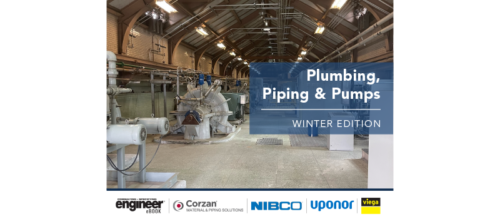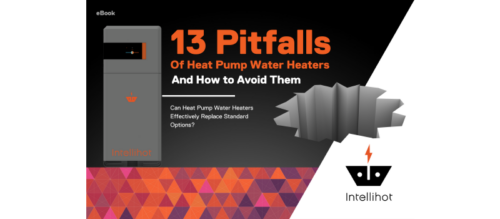Decentralized DHW offer safer, more sustainable building design solutions
Substations improve domestic hot water (DHW) hygiene and maximize hydronic heating efficiencies to lower system energy costs, reduce building maintenance, support sustainability efforts, and minimize risk
DHW insights
- Domestic hot water (DHW) systems are used in practically every commercial building type, including health care, schools and multitenant buildings.
- Decentralized DHW technologies make sense in many applications, and engineers should understand where and why they should be specified.
With the number of Legionnaires’ disease cases continuing to rise, water turnover, aging and hygiene in domestic hot water (DHW) systems has become one of the most critical factors for engineers and facilities management teams. Reducing water aging while keeping temperatures in ranges that avoid microbial growth is now paramount.
In addition to system hygiene, it is also important to develop energy and exergy efficiencies that effectively conserve energy. This requires new design methodologies along with thoughtful material and equipment selection to strike a balance with sustainability, scheduling, and budgetary goals.
How DHW affects hygiene, human health
Domestic water systems have many compounding issues, including:
-
Oversized and complex piping networks.
-
Reduced fixture flow rates and increased water volumes that contribute to aging water.
-
Dissipation of water treatment chemicals throughout a system that result in increased bacteria and microorganism growth.
And there are several strategies to mitigate these issues. However, they also have corresponding consequences.
For example:
-
Adding more chemicals into the potable water system can negatively impact water quality and system health.
-
Increasing the water temperatures to dangerous levels to kill microorganisms will result in several adverse issues, including excessive energy stored and wasted, more components added into the system to mix water temperatures back down to usable levels and a potential negative impact to system health.
-
Incorporating copper-silver ionization, which can result in premature corrosion.
-
Frequently flushing the system wastes both water and energy on the hot side.
More municipalities are recommending the flushing method. The city of Chicago, for example, recommends flushing a system for five minutes after it has been stagnant for six hours or more to maintain water quality.
Decentralized DHW systems
Because every action has a reaction, how can the industry implement strategies that have the greatest positive outcome while also mitigating negative impacts?
There are methodologies that have been proven and implemented in other parts of the world for decades. For instance, Europe has evolved to overcome similar water quality issues. The Association of German Engineers VDI 6023 Hygiene in Drinking Water Installations standard applies to requirements for planning, execution, operation and maintenance of all drinking-water installations on premises and in buildings.
The first publication of VDI 6023 was released in 1999 for planning considerations for stagnation, water volume, turnover, temperature, and velocity. It states that through design and operation, all water must be turned over within 72 hours by means of tapping; dead legs should be minimized and supply water line volumes must be less than or equal to 3 liters (0.8 gallons).
It goes on to state that recirculation volumes greater than 3 liters require recirculation at 60°C (140°F) and oversizing piping is not allowed and should follow DIN 1988, Codes of Practice for Drinking Water Installations.
If you have been to Europe in the past 20 years, there is a high probability you have washed your hands or showered using hot water generated from a decentralized DHW system that uses a technology called heat-interface units, stations or substations.
These systems are usually engineered, factory-assembled, tested and certified water-to-water appliances for the generation of DHW when supplied with fluids from a hydronic heating source. The self-contained unit includes a heat exchanger that converts a building’s hydronic heating supply into on-demand DHW within isolated hot water networks that follow the above considerations (see Figure 1).

Figure 1: Available in Europe for the past 20 years, decentralized domestic hot water (DHW) systems use a technology called heat-interface units, stations or substations to generate DHW from the hydronic heating source. Courtesy: Uponor
Decentralized DHW systems with heat exchanger solutions are gaining attention in the United States as an efficient and sustainable solution for hot water supply.
Traditional centralized DHW systems are typically operated by generating hot water at a central location and then distributing it through a complex piping network throughout the building (see Figure 2).

Figure 2: Traditional centralized domestic hot water systems are typically operated by generating hot water at a central location and then distributing it through a complex piping network throughout the building. Courtesy: Uponor
In contrast, decentralized systems generate hot water at the point of use, simplifying the piping network and often using renewable energy sources to help reduce energy consumption and greenhouse gas emissions. Decentralized systems can also provide greater reliability because they provide hot water closer to the point of use and are less prone to breakdowns. This helps ensure each subnetwork has access to hot water, regardless of what happens elsewhere in the system (see Figure 3).

Figure 3: Decentralized systems generate hot water at the point of use, simplifying the piping network and often using renewable energy sources to help reduce energy consumption and greenhouse gas emissions. Courtesy: Uponor
In North America, the double-wall heat exchanger (versus a single-wall heat exchanger in Europe) is a domestic heat source (heat transfer from the hydronic heating side) that eliminates the centralized DHW heating system, storage tanks, pumps, recirculation lines and everything in between. In the mechanical room, these hydronic heating systems can generate heat from boilers, heat pumps, district energy systems, solar, thermal or any combination of these, which set the project up for agility in the future. And an added benefit is that according to the U.S. Department of Energy, hydronic systems use little electricity in comparison to other systems.
Decentralized fresh-water technology systems are beneficial as they are considered on-demand with a heating supply within a recommended maximum of 0.8 gallons, equivalent to 87 feet of ½-inch SDR9 pipe, to the end-use fixtures. The units are placed near low-flowing fixture groupings with high concentration density, such as in multifamily, hospitality and assisted living structures.
The technology is listed to ASSE LEC 2010-2020 and NSF 61 as it operates via a proportional control valve that generates a hot water supply in proportion to the active demands once the hot water tap is opened with a 2.5-second charge time on the heat exchanger. When doing the math, simplified sub-networks reduce up to 40% of the DHW piping by eliminating the supply and return piping, resulting in up to 50% savings of the hot water volume. That is huge savings in just the piping network, not including the elimination of potential storage tanks. By reducing the overall building water volume, it helps ensure fresh water is evacuating the building faster to improve water quality and hygiene.
There are additional positive system impacts by removing the DHW supply, return lines and storage tanks, which include saving valuable space, eliminating corresponding pumps and their pumping energy, reducing the amount of energy stored within the system, eliminating standby losses and reducing system energy costs by up to 35%.
Considering heat exchanger solutions
This data is from an internal study by HGA on a 300-room hotel in Minneapolis, which saw 91% average efficiency out of a natural gas condensing boiler by supplying lower return water temperatures. The heat exchanger solution requires lower temperatures, closer to DHW setpoints, to generate hot water on demand and enhances system performance, enabling the boiler system to reach its maximum-rated efficiency by returning cooler water temperatures and improving the efficiencies of the boiler.
Many heat exchanger solutions provide even more benefits by not using or requiring electricity, gas, venting or batteries to operate. This eliminates the potential for all that extra material used in the building. It also saves mechanical shaft space, reduces costs and reduces the associated greenhouse gas emissions.
These compact units are 14.5 inches wide, 25.6 inches high, 5.4 inches deep and can mount recessed and flush in a 6-inch plumbing wall. They are relatively lightweight at around 50 to 60 pounds, and they help minimize maintenance and are risk-averse to code changes.

Figure 4: The Uponor AquaPort is a self-contained unit that converts a building’s hydronic heating supply to provide on-demand domestic hot water. Courtesy: Uponor
When engineering these solutions, consider these factors:
-
It consolidates loads for efficiency optimization by reducing to a single plant in a mechanical room through the elimination of the DHW heater.
-
Due to low heating hot water return temperatures, setback is not required.
-
The heat terminal units for space heating should consider the temperature profile of the system.
-
-
Eliminating dedicated DHW heaters improves arguments for optimized primary plant redundancies, facilitating planned maintenance and enabling duty cycling.
-
Introduce, if necessary, buffer tanks to stabilize cycling.
-
Be aware that the plumbing fixture gallons per minute load will transition from the eliminated hot water supply line to the cold water supply lines. Domestic water temperature and pressure controls for each suite are nonelectric and contained within the heat-transfer unit.
Decentralized DHW brings efficiencies
With the ever-changing requirements of energy-efficient, sustainable building design, along with human health and hygiene at the forefront, innovative solutions are necessary to meet the needs of modern living.
Plumbing and mechanical engineers should look at the decades-old, domestic-water systems and evolve toward safer, more efficient solutions that incorporate advanced design to support a more sustainable future.
Decentralized, fresh-water technology systems will benefit buildings with greater efficiency and water conservation while also promoting better hygiene for humans and lowering greenhouse gas emissions for the planet.
Do you have experience and expertise with the topics mentioned in this content? You should consider contributing to our CFE Media editorial team and getting the recognition you and your company deserve. Click here to start this process.




